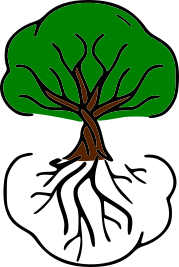Editor’s Note: Do not attempt to capture any wildlife, especially snakes. This class was done with trained professionals who kept all participants safe with decades of experience.
As a graduate student at the North Cascades Institute, most of my experience in environmental education over the past year has been teaching fifth graders inMountain School and graduate natural history retreat classes. Earlier this month I got to experience a whole new side to environmental education at the institute:adult field classes.
Designed to get students of all ages (10-110) into the outdoors, these excursions happen all over the greater North Cascades bio-region. On Mother’s Day I went over to the Methow Valley to help John Rohrer and Scott Fitkin, district biologists, with the Snakes and Amphibians of the Methow Valley class.
John Rohrer, District Biologist for Methow Valley Ranger District in National Forest.
Scott Fitkin, District Wildlife Biologist for Washington Department of Fish and Wildlife.
I had met both John and Scott in February on a natural history retreat, where they taught my graduate cohort about their work with wolverines. Being just as enthusiastic and energetic about snakes and amphibians, we started off the day at the Methow Ranger District Station in the Methow Valley. They then instructed us that we would go to various locations in the valley throughout the day, to see as many snakes and amphibians as possible. We were also going to be taking measurements on each snake we could find, to build upon past knowledge and see how the populations could be changing over time.
Participant holding a racer snake.
At our first location, John and Scott informed us that there were no rattle snakes in the area, so we could pick up any snake we found! Darting throughout the brush participants were picking up and noticing snakes left and right. As soon as we would finish measuring one someone would bring another one for Scott to take notes on.
Participants getting ready to measure a garter snake.
In the first location we found racer, garter and gopher snakes. While gopher snakes look very similar to rattle snakes, they don’t have the characteristic rattle and are safe to pick up (with professional experience of course).
Gopher snake.
When we did venture into rattle snake territory, John and Scott would capture the snake and place it in a tube (like the cover photo). When the snake was halfway though the tube they would hold it in place, not allowing it to escape in either direction of the tube (very similar to surgical cones placed on dogs).
Participants petting a rattle snake.
What made this an amazing class was not the wildlife I saw, but the interactions between the participants and their natural neighbors. We had students as young as ten to as old as over 80, but you would never tell just by looking at how engaged everyone was. Each person was invested in each snake, being safe but allowing themselves to see how wonderful these creatures truly are.
Looking for amphibians.
The snakes definitely stole the show, since we couldn’t find many amphibians. We caught a few tadpoles over the whole day…but 42 snakes in total! What a great day to get out and learn about our natural neighbors.
This was one of our family field classes. There are still positions available for our other classes (like exploring wild flowers on Sauk or spring birding with Libby Mills) so check them out!
*I originally wrote this article for Chattermarks, the official blog of the North Cascades Institute. You can find all of my posts on Chattermarks here.
The next section is a reflection required for my portfolio and was not originally part of the blog post on Chattermarks.
Adult Class Reflection
It has been a few weeks after taking this class, and I still find myself thinking about being hands on with these creatures. Yes, I did learn what type of snakes we have and some of the problems they are facing. But this style of environmental education is entirely different than what I grew up with and even Mountain School for the most part.
Growing up, nature was scary. You only go out when it is not too hot, and if there is not a wasp nest near. Catching live snakes, even the harmless ones, goes against my entire up bringing. I enjoyed it, don't get me wrong, but it felt like putting your hand on a hot stove.
John and Scott both held a quiet enthusiasm about the material, which I have tried to embody since attending the class. While getting super amped up is one technique, allowing students to explore the material at their own pace is at times more appropriate. This worked especially well when they held the rattle snakes in a tube, allowing students to look literally down the barrel into the eyes of the reptile.









